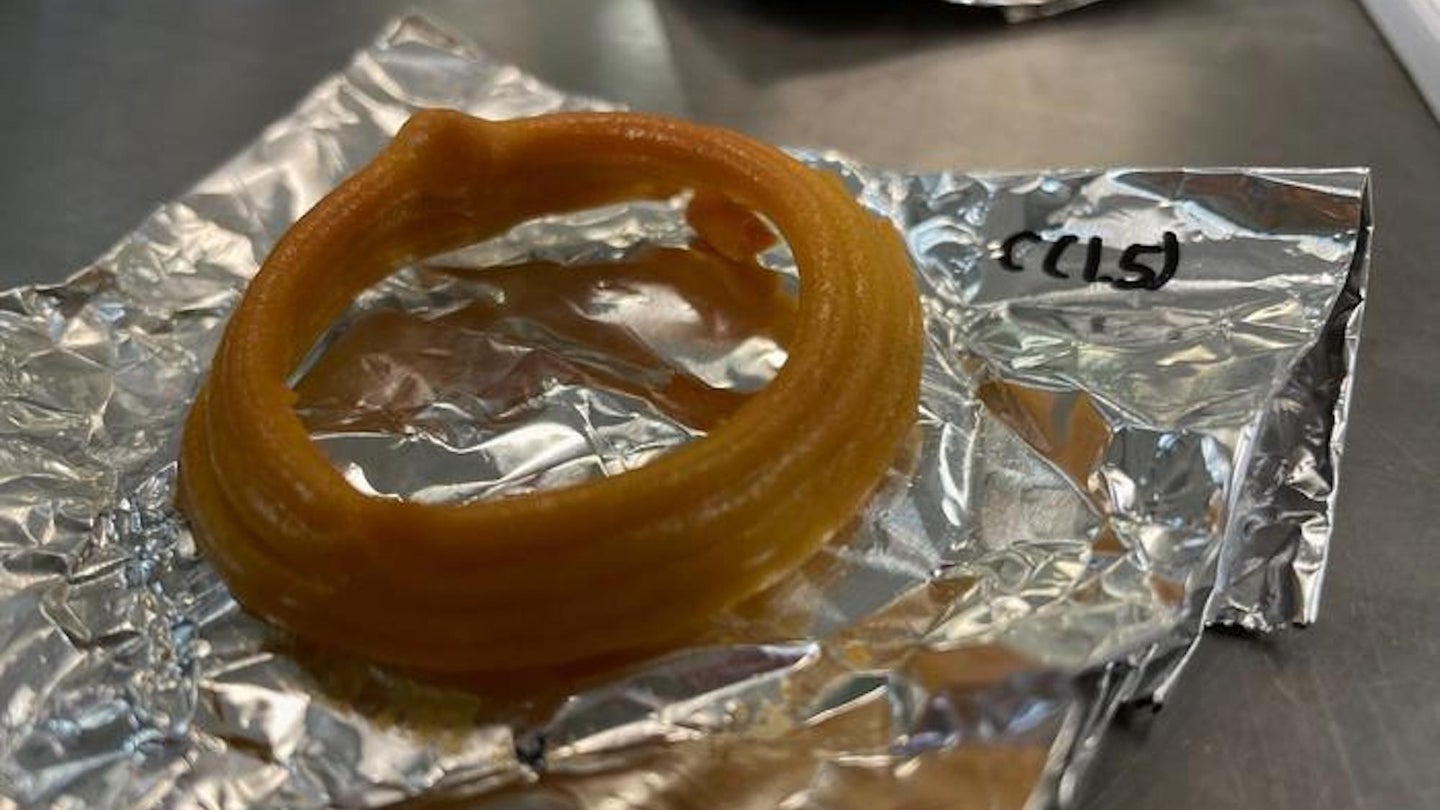
The global commercial fishing industry is a major contributor to Earth’s environmental crises and ecological destruction, but you’re unlikely to find many sustainable or vegan seafood alternatives next to the synthetic beef and chicken in grocery stores. That lack of options may soon change, however, thanks to 3D printers, mung beans, and microalgae.
At the American Chemical Society’s fall meeting this week, a team from the National University of Singapore presented the results of a newly synthesized mock seafood that could one day find its way into restaurants. After designing an ink composed of legume and microalgae proteins, alongside plant-based oils containing omega-3 fatty acids, researchers loaded their paste into a food-grade 3D printer, which then churned out small, calamari-shaped rings. The team then tossed their faux-seafood into an air fryer, and taste-tested their results. According to researchers, the end product is showing incredible promise for a new, healthy alternative to commercial seafood options.
[Related: Scientists cooked up a 3D printed cheesecake.]
Although some fishy plant-based alternatives are available to consumers right now, they frequently do not boast the same nutritional content as seafood. “Plant-based seafood mimics are out there, but the ingredients don’t usually include protein,” explains principal investigator and professor of food science and technology, Dejian Huang. “We wanted to make protein-based products that are nutritionally equivalent to or better than real seafood and address food sustainability.”
To improve their imitations, Huang’s team programmed their 3D printer to assemble their imitation calamari rings in concentric layers, thus allowing for a combination of different textures ranging from fatty and smooth, to chewy. This layered approach results in a more accurate mouth feel to their squid source material.
But calamari alternatives are only as good as they are sustainable, of course. Luckily, Huang’s new mock seafood is designed specifically with that in mind: Microalgae is nutritious, often “fishy” in taste, and extremely sustainable to farm. Mung bean protein, meanwhile, can easily be harvested from the waste product of starch noodle manufacturing. Although Huang’s team still wants to improve their creation before they begin consumer taste tests, they believe the results are already a promising step towards green seafood alternatives.
For Poornima Vijayan, a graduate student involved in the project, it’s a vital end goal. “I think it’s imminent that the seafood supply could be very limited in the future,” she says. “We need to be prepared from an alternative protein point of view, especially here in Singapore, where over 90 percent of the fish is imported.”
The post 3D-printed vegan calamari rings could be next on the menu appeared first on Popular Science.
Articles may contain affiliate links which enable us to share in the revenue of any purchases made.
from | Popular Science https://ift.tt/psKdYNU



0 Comments